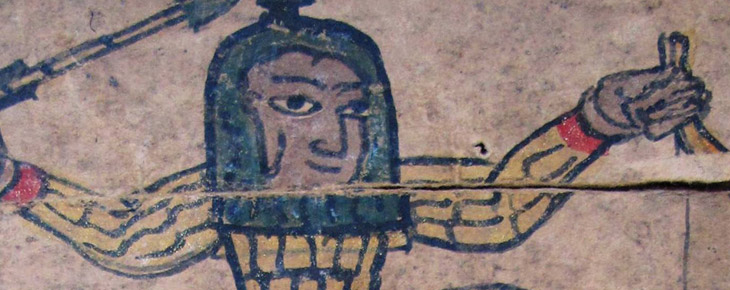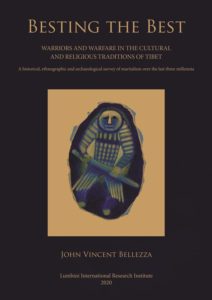
2019
John Vincent Bellezza
New Book on Tibet Coming Soon!
Besting the Best
Warriors and Warfare in the Cultural and Religious Traditions of Tibet
A historical, ethnographic and archaeological study of martialism over the last three millennia
John Vincent Bellezza
Scheduled date of publication: May 2020, Lumbini International Research Institute, Lumbini
225,000 words, 275 photos and diagrams, 4 maps
 Employing historical, ethnographic and archaeological sources, this monograph explores the human and material agents of war and warriors on the Tibetan Plateau. The cultural and religious foundations of combat and other bellicose traditions are surveyed through Tibetan textual and anthropological evidence, establishing an interpretative framework for analyzing the significance of the ancient rock art, monuments and artifacts also featured in this work. Set against such archaeological and artistic records, the investigation of martial ideas, practices and technologies permits the postulation of longstanding links in the conception and conduct of warfare in Tibet.
Employing historical, ethnographic and archaeological sources, this monograph explores the human and material agents of war and warriors on the Tibetan Plateau. The cultural and religious foundations of combat and other bellicose traditions are surveyed through Tibetan textual and anthropological evidence, establishing an interpretative framework for analyzing the significance of the ancient rock art, monuments and artifacts also featured in this work. Set against such archaeological and artistic records, the investigation of martial ideas, practices and technologies permits the postulation of longstanding links in the conception and conduct of warfare in Tibet.
A wide panorama on martialism on the Tibetan Plateau is opened by scrutinizing the development of the military figure and his equipment and emblems. Although the history of specific military operations is not covered in this work, it examines the ideological and sociopolitical apparatus as well as the technological inputs underpinning violent struggle from prehistoric until premodern times. The book expounds upon the cultural conditions contributing to martialism during the Tibetan empire (ca. 600–850 CE), elements of which endured until recent centuries. Though little known to scholarship, historical milestones in the cultural composition of warriors and war were preceded by more formative legacies. Through the allied ethnographic, historical and archaeological perspectives offered in this work, the martial heritage of the Tibetan Plateau is traced to the Late Prehistoric era (1200 BCE to 600 CE). As the study will show, certain abstract and tangible legacies of this remote epoch were palpable in the Tibet of premodern times.